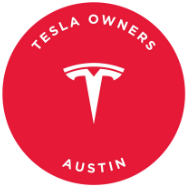Tesla is making moves to enter the ride-hailing market in California, as the company has applied for regulatory approval to launch a transportation charter-party carrier service. This permit would allow Tesla to operate its own fleet of vehicles, similar to Waymo, Alphabet Inc.’s self-driving taxi unit.
CEO Elon Musk has been vocal about Tesla’s robotaxi ambitions, with plans to launch a driverless ride-hailing service in Austin as soon as June. However, the company has not yet received approval to test or deploy fully autonomous vehicles in California. Recent filings from Tesla discuss driver’s license verification and drug-testing protocols, indicating that human drivers may be involved in the early stages of the service.
California has strict regulations for autonomous vehicles, which have slowed progress for companies like Waymo and Cruise, General Motors’ robotaxi division. Unlike Uber and Lyft, which allow drivers to use personal vehicles, Tesla’s application would require a company-owned fleet. While Musk has promised a fully autonomous Tesla ride-hailing network, the company’s current driver-assistance technology still requires a human behind the wheel.
In contrast to the challenges in California, Tesla’s path to launching a robotaxi service may be smoother in Texas, where regulations for autonomous vehicles are less restrictive. The company will still need a ride-share license from state regulators, but as of February, it had not yet applied. Uber, on the other hand, is expanding its autonomous ride-hailing offerings by partnering with Waymo to launch self-driving rides in Austin and Atlanta this year.
Tesla’s move into the ride-hailing industry has the potential to reshape transportation, but it remains to be seen whether regulators will approve the plan and how quickly Tesla can deliver on Musk’s vision of a robotaxi fleet. The competition with Uber, Lyft, and Waymo will be fierce, but Tesla’s innovative approach to autonomous vehicles could give them a unique advantage in the market.

